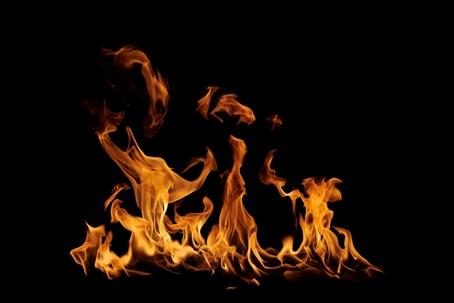When thinking of fire safety, most people think about having functioning smoke detectors and creating an emergency plan. While those are important elements in at-home fire safety, fires can occur outside of the home and a major factor that is often overlooked is the role proper management plays in protecting against injury. Negligence in managing buildings and other properties can lead to fires causing serious injuries — even fatalities — which could otherwise be avoided with adequate care on behalf of landowners and employers alike. In this blog post, we will explore common fire injuries due to negligent management.
What Is Negligent Management?
Negligent management most often occurs when precautions aren't taken. It can happen when management fails to use reasonable care and follow regulations. When this happens, it can lead to employee, tenant, resident or customer injury. This can have devastating consequences for all parties involved.
Examples of negligent management include:
- Failure to repair broken equipment.
- Lack of employee training and/or supervision as needed.
- Failure to stay updated on routine maintenance.
- Failure to put up hazard signs.
- Failure to replace fire detector batteries.
- Failure to implement and enforce emergency protocols.
Types of Fire Injuries
The aftermath of a fire or explosion can cause serious damage to a person's skin and lead to permanent consequences. The pain and trauma associated with a burn injury can be overwhelming and it can take weeks, if not months for the skin to fully heal. The severity of a burn injury is classified in terms of degrees, with the higher degrees indicating more severe damage. Smoke inhalation is also potentially lethal (heat and toxins from the fire and smoke result in tissue damage, introduction of poisons into the blood stream, inability to breathe, etc.).
Types of fire injuries can include:
- First Degree Burns: These are the least severe burn injuries. First degree burns typically lead to minor inflammation, swelling, and dry, peeling skin.
- Second Degree Burns: Second degree burns affect deeper layers of a person’s skin and can leave blisters and redness.
- Third Degree Burns: This type of burn is the most severe non-lethal burn. Third degree burns destroy multiple layers of skin and victims require hospitalization. This type of burn leaves charred skin and damages tissue.
- Fourth Degree Burns: Fourth degree burns are most often lethal and affect internal organs. Survivors lose tissue and require skin grafts.
- Fifth Degree Burns: This type of burn affects tissue, organs, and possibly bones in the harmed area. Fifth degree burn survivors often require amputation as this type of burn can be deadly.
- Sixth Degree Burns: Sixth degree burns can damage bones and be deadly.
- Lung Damage: After inhaling chemicals in fire smoke, lungs can be damaged resulting in swelling and possibly lifelong shortness of breath or hoarseness.
Major burns are not only physically devastating, but they can also have long-lasting effects on a victim's quality of life. Even those who survive may experience challenges related to scarring, contractures, weakness, and thermoregulation. Itching, pain, sleep disturbances, and body image issues can also persist, impacting a person’s overall well-being. These physical complications can occasionally pale in comparison to the emotional damages, such as Post Traumatic Stress Disorder (PTSD), etc.
Management Safety Responsibilities
In general, employers and business owners are responsible for providing safe environments for workers, tenants, residents and customers.
Management responsibilities include, but are not limited to:
- Providing safety and health training for workers.
- Completing routine inspections to ensure safe and healthy conditions.
- Investigating accidents and developing measures to prevent repeat occurrences.
- Installing appropriate fire extinguishers within buildings.
- Ensuring fire exits are properly labeled and not blocked.
What You Can Do to Prevent Fire Injuries
Management has a crucial role to play in maintaining a safe and healthy environment for everyone who enters a building. Whether it is installing an up-to-date fire alarm system or conducting regular inspections of electrical and heating systems, it is essential for building owners and managers to take proactive steps in preventing and responding to emergencies. However, there are also individual precautions that you can take to help protect yourself and others against the potential dangers of fires.
Steps to take to implement fire safety include:
- Familiarizing yourself with emergency exits.
- Reporting any concerns about potential fire hazards.
While employers and business owners are responsible for providing safe environments, you can help yourself and others further diminish fire injuries through these tips.
Contact a Personal Injury Attorney
Fire injuries can be devastating, both physically and emotionally. If you or a loved one has suffered from this type of injury, it can be overwhelming to deal with the aftermath and secure the compensation you may be entitled to.
At Brett H. Oppenheimer PLLC, our experienced attorney is here to help clients navigate the complexities of personal injury and wrongful death cases. We understand the pain and hardship that comes with this type of situation, which is why we are dedicated to providing compassionate and effective legal representation. Don't hesitate to reach out to our team for support during this difficult time.
Call us at (502) 242-8877 or contact us online for a consultation.

